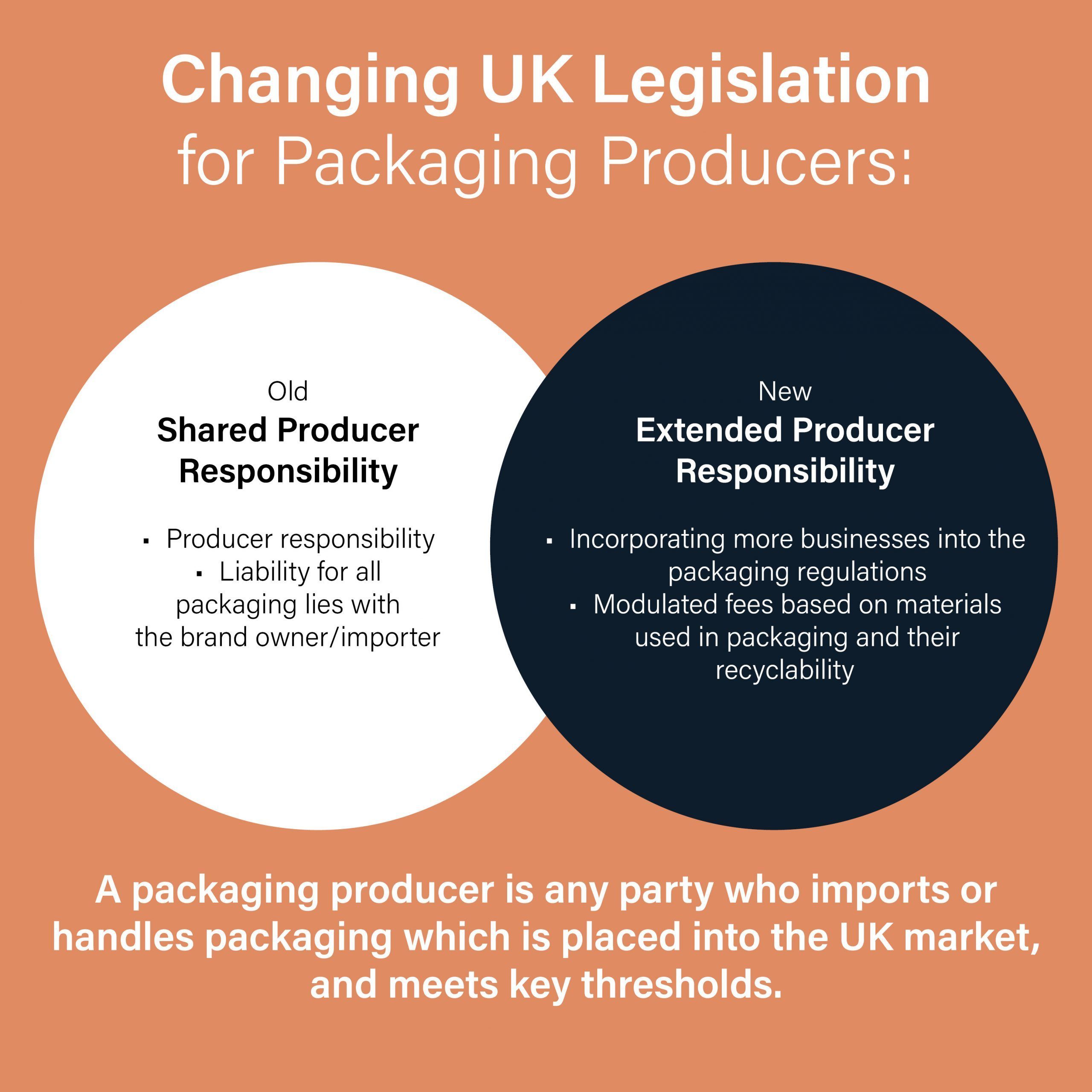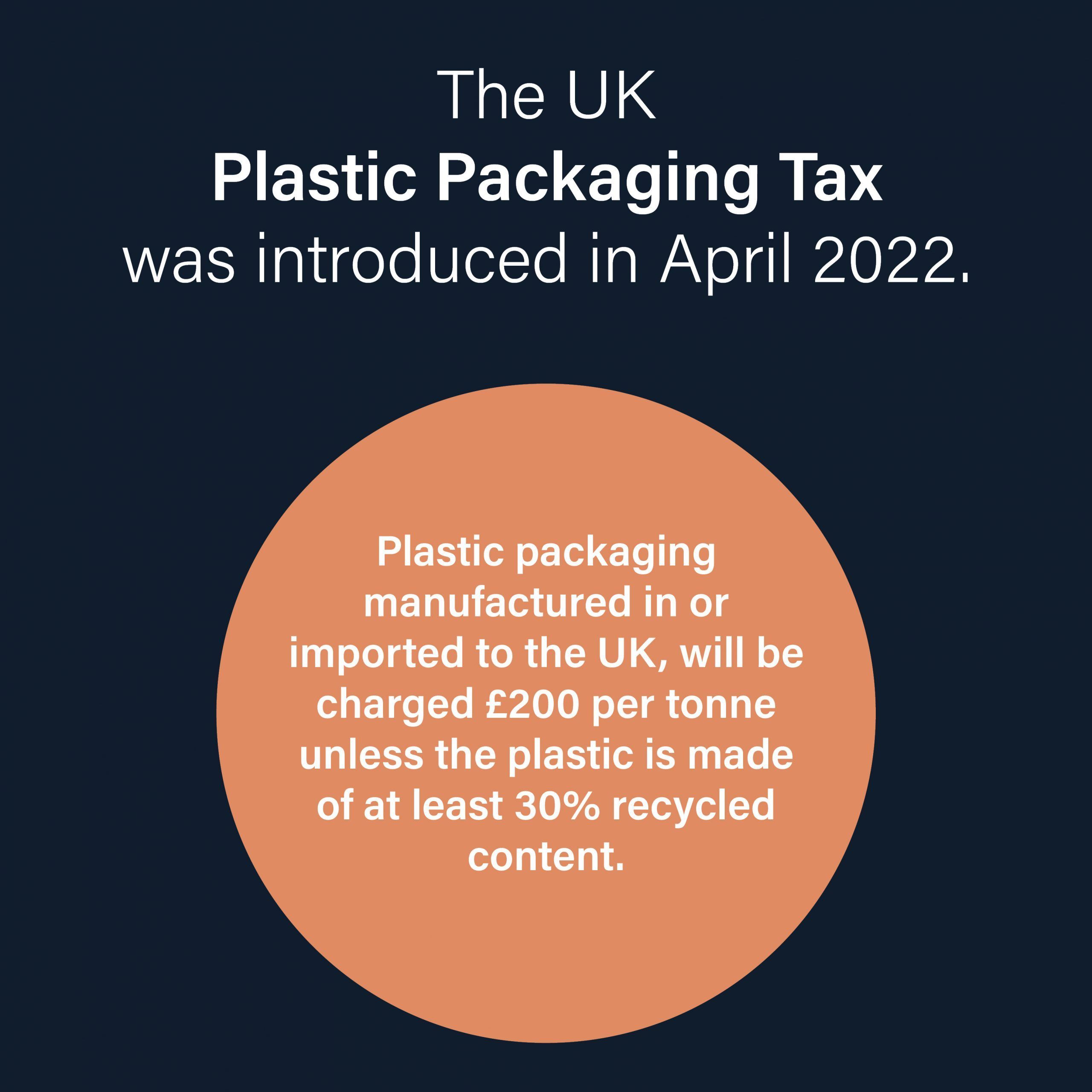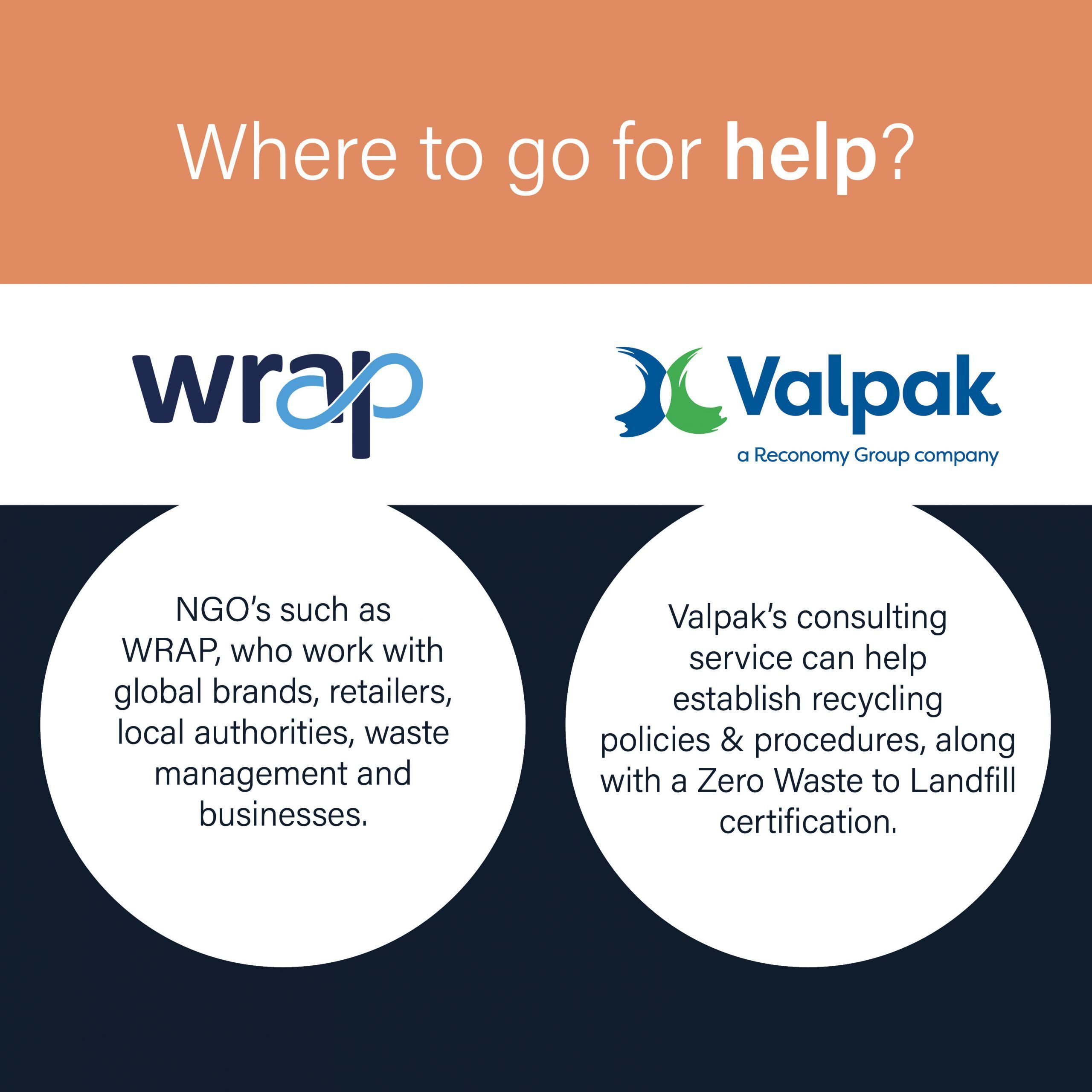Insight: Packaging Regulations with
Valpak
We sat down for a deep dive into current and upcoming UK packaging regulations with Valpak who provide UK-wide compliance solutions, waste management services, and sustainability consulting. Their packaging compliance scheme helps businesses meet specific criteria set out in the Packaging Waste Regulations.
For small business owners, what are the upcoming packaging regulation changes they need to be aware of?
The key upcoming change to be aware of is the transition from shared producer responsibility (the current packaging compliance system), which sees obligations for packaging split throughout the supply chain, to extended producer responsibility (EPR), where liability for all packaging will lie with the brand owner/importer. As of now, the UK Government have proposed these new regulations to be introduced in 2024. They will reduce the current obligation threshold by half, incorporating more businesses into the packaging regulations, whilst also introducing modulated fees based on materials used in packaging and their recyclability. On top of this, it looks likely EPR will make the takeback of disposable cups mandatory for brand owners/importer of such cups.
What kind of businesses are affected by the new ‘extended producer responsibility’?
At the basic level, EPR will impact any businesses producing physical products sold with packaging around them. However, for the regulations to apply, the business must have to meet the relevant obligation thresholds (likely to be halved from the current shared responsibility thresholds i.e. an annual turnover of £1 million, whilst also handling at least 25 tonnes of packaging every year). Additionally, there is a view to eventually extend the EPR regulations to update other existing waste regulations, such as the batteries and Electrical and Electronic Equipment (EEE) obligations. Similar to the current system, producers of such items will be obligated to contribute towards the cost of their recycling under EPR. Furthermore, there are expectations the UK could incorporate a textile element into their EPR regulations, similar to what is currently seen in Europe, meaning textile producers may also become obligated.
What are the rules around single use packaging across the UK?
Since 2020, there have been bans placed on the sale and production of certain types of single use plastic. This is connected to the EU’s Single Use Plastics Directive, which the UK chose to implement despite our eventual EU exit. The Directive was centered around the 10 single use plastic products that are most often found washed up on the EU’s beaches (e.g. cotton buds, drinks stirrers, cutlery and cups). The UK’s legislation included all 10 of the products and is likely to pave way for further single use products being banned into the UK in the near future.


The new UK Plastic Packaging Tax:
The UK Plastic Packaging Tax was introduced to the UK in April of this year (2022) as an additional levy specific for plastic packaging of products. Plastic packaging comprised of at least 30% recycled content is exempt from this tax, providing the producers of said packaging can provide evidence of this recycled content. If the evidence cannot be provided, or the recycled content within the packaging is below 30%, the producer will be charged at a rate of £200 per tonne of plastic packaging. For a business to be subject to the plastic tax, they must manufacture or import at least 10 tonnes of plastic packaging over a 12-month period.
What kind of packaging can small business put in their curbside recycling and what should they think more carefully about?
The packaging permitted to be recycled at curbside generally varies based on the area of the UK the packaging is being disposed of, as curbside collections at the discretion of the local council. However, the On Pack Recycling Labels (OPRL) can provide a good indicator as to whether the packaging can be recycled at curbside or needs to be taken to a specific location for handling. Additionally, the Recycle More website provides information on where to take certain packaging types for recycling. This can be found using the following link: Where to recycle? | Recycle More (recycle-more.co.uk)
Are there some good resources that support small businesses when creating their recycling policies and procedures?
When looking to improve your business’ recycling rate and reduce environmental impact, it can be beneficial to consult NGOs such as WRAP (Waste & Resources Action Program) for general guidance.
However, for more personalized tips, it is preferable to seek expert advice. Valpak’s own Consulting service help small businesses establish recycling policies and procedures. Our consulting teamwork with businesses to help them determine their recycling and sustainability goals. Additionally, we can help businesses achieve their Zero Waste to Landfill certification, demonstrating their understanding of the importance to maximize recycling in their waste stream.

Are there any key dates to be aware of from a packaging and recycling perspective?
For companies who are obligated under the UK packaging regulations, 7th April is of key importance, as this is the date by which your packaging quantities from the previous calendar need to be submitted. Additionally, following the introduction of the Plastic Packaging Tax this year, it is also important producers are aware of the quarterly submission dates. These are the last working day of the month succeeding the period the plastic packaging data has been collected for. So, for data between 1st April-30th June 2022, the submission deadline is the 29th July 2022.
Deposit Return Scheme
The Deposit Return Scheme (DRS) is currently set to be introduced in Scotland only from 16th August 2023 and will eventually be introduced in the rest of the UK (exact date TBC). As of now, the Extended Producer Responsibility regulations are set to be introduced in the UK sometime in 2024, with the exact dates TBC.
Do you have any best practice Top Tips for dealing with packaging and recycling for small business?
If your small business is obligated under the Packaging Waste Regulations or the Plastic Packaging Tax (mentioned in previous questions), we would recommend joining a compliance scheme such as Valpak, a Reconomy Group company, to facilitate your obligations and registration with the Environment Agency. Joining a compliance scheme relieves a lot of the administrative burden, especially that involved with self-compliance and gives an obligated small business one less thing to worry about!
Even if the small business isn’t obligated under the regulations, Valpak recommends exploring recycling options with local waste management companies, to ensure any recycling claims you are making as a business are correct. In general, consumers are a lot more switched on to the environmental impact of the products they buy, so ensuring your claims are backed up and true will help boost brand credibility and even sales in the long run.
We also recommend offering takeback services for harder to recycle packaging (flexible plastics etc.). Not only can this act as environmental credibility, but also working with a registered reprocessor (or a recycling establishment able to issue WTNs), could offer the possibility of deducting collected and reprocessed quantities from your PRN obligation and bill. Valpak’s Recycling Services division can help you explore which takeback options will work best for you and your business.
Finally, whether or not you are obligated under the packaging regulations, keeping a good handle on all aspects related to packaging and recyclability comes from having the right data. The more detailed data a business can collect and store, the more information you have to make informed decisions on matters such as packaging design changes. The benefits don’t end there, as under the proposed EPR regulation changes, more detailed data reporting will become the norm, so the sooner a business can start gather this information, the better.
At Valpak, we are already helping our members get ahead of the curve by collecting valuable metrics for their packaging, including recyclability, recycled content, material colour etc. Our Data Insights Platform (https://www.valpak.co.uk/insights/insight-platform/) then allows businesses to interrogate their data to a granular level, to ensure any pledges are being followed and any new decisions are made based on solid data and information.
Do you have some good examples of responsible packaging and recycling from around the world?
The best packaging is that which takes into account fully the life cycle of the item at the design stage. This allows for full adherence to the waste hierarchy, in the right order considering the full environmental impact of their (conscious) packaging decisions.
Over the years we have come across an increasing number of companies who consider these aspects in packaging design and packaging choices. This can sometimes mean testing whether public perception and sentiment is the right thing and being open minded to the idea that the outcome to any analysis may not entirely align to the consensus customer view at that time. This is particularly prevalent in the area of plastics, where any organisation going into an assessment needs to understand that, in a balanced analysis, it could be that plastic is the ‘right’ outcome.
Over the last few years, Valpak Consulting have worked with a variety of brand holders to help them to make decisions that align to the premise of designing and assessing for ‘reduce’, ‘reuse’ and ‘recycle’ by assessing packaging items and alternatives against a plethora of environmental impacts. Of course the two most prevalent impacts on people’s mind at present are the use of plastics and the contribution to climate change (carbon footprint), two aspects that are not always aligned to one another – so sometimes a decision has to be made. But before all that, we are seeing an increasing number of businesses that are considering their entire packaging portfolio and assessing against ‘best in class’ in terms of their own metrics, – thereby forming the basis of the ability to measure improvements.
So we have helped businesses move from plastic multipack outers to cardboard equivalents and critically helped them to understand the whole environmental performance (as well as the public perception around plastic) of that switch, we have helped to understand the environmental impacts of alternatives to polystyrene (cardboard and returnable packaging, with all the logistical factors that this adds), the relative merits of glass to plastic and even helped a media company manage (and reduce year-on-year) the impact of a ‘physical’ product in comparison to the digital alternative.
Businesses more conscious than they were in the past about environmental issues and are considering these at the design and assessment phases and are really starting to understand each phase of the process for delivering packaging, and not ‘just’ the product, to market.